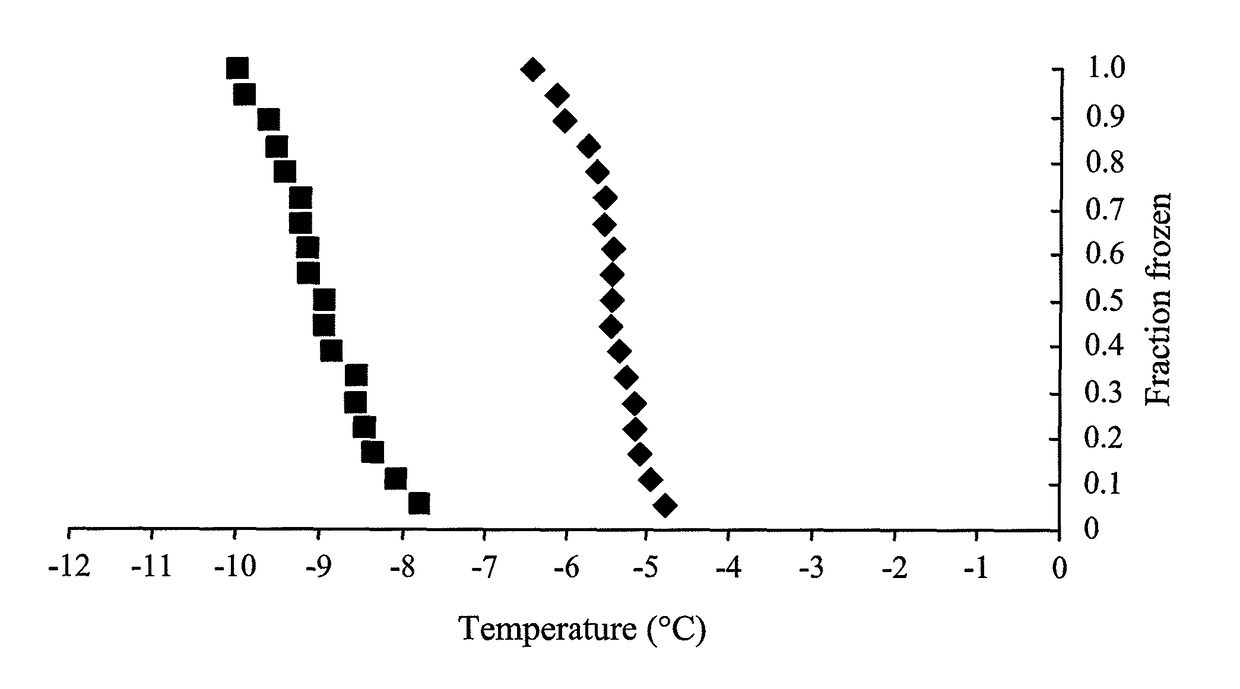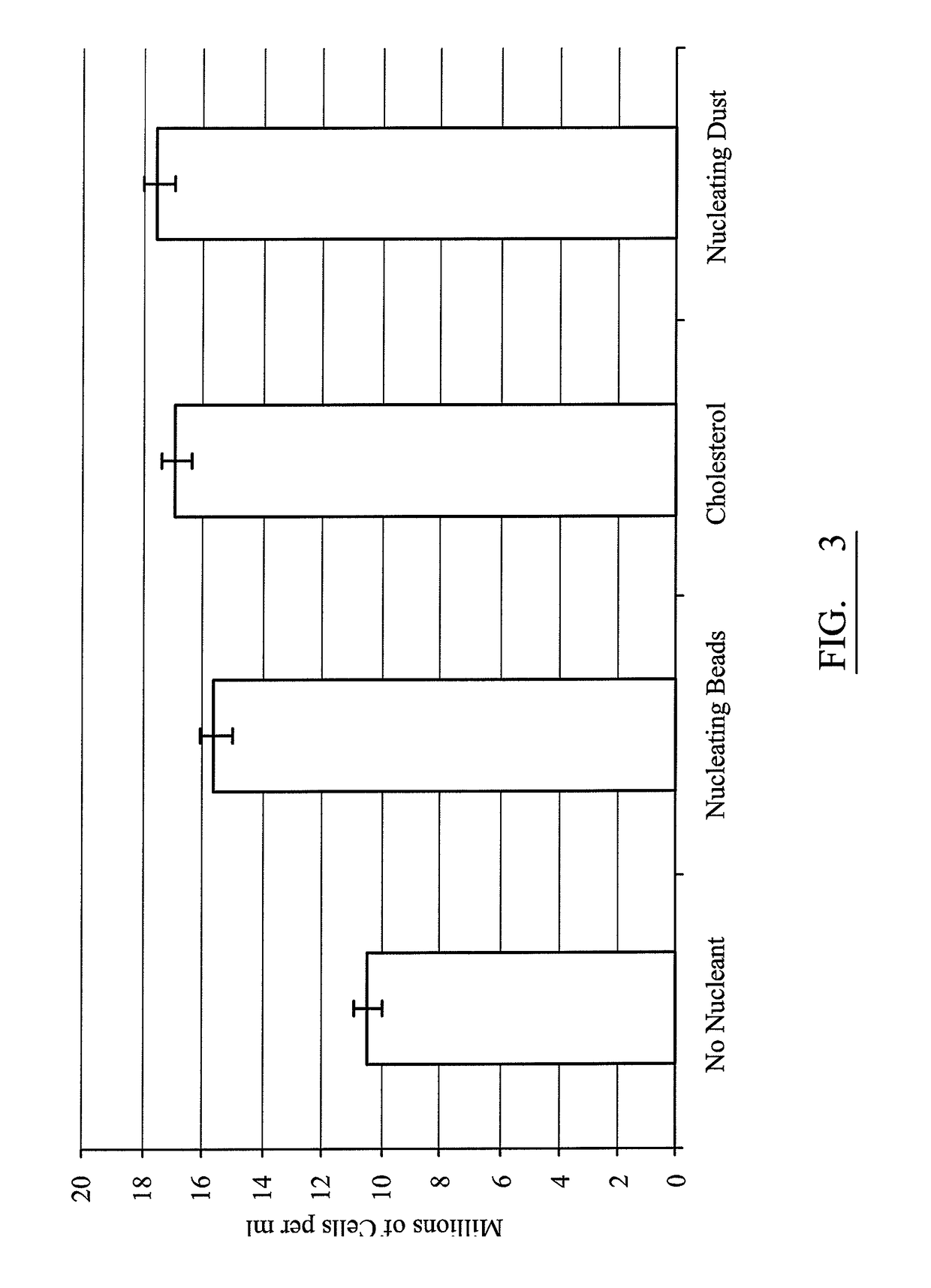Method of freezing making use of a mineral nucleator
- Summary
- Abstract
- Description
- Claims
- Application Information
AI Technical Summary
Benefits of technology
Problems solved by technology
Method used
Image
Examples
example 2
N EXPERIMENTS IN STRAWS
[0090]Experiments were carried out in straws for cryopreservation of sperm cells. The straws contained PVA (polyvinyl acetate) in one end enclosed between two cotton ‘plugs’. The PVA was emptied out from the straw and replaced with the mineral nucleator in powder form. The straws were placed in an EF600 electrically powered controlled rate freezer (Asymptote Ltd, Cambridge, UK) and cooled from room temperature down to 4° C. at a rate of 2° C. per minute, then held at 4° C. for 5 minutes and then cooled at 1° C. per minute until nucleation occurred. Nucleation was registered by a T-type thermocouple in each straw at the opposite end to the nucleator and noting the temperature at which the heat of fusion was released.
[0091]FIG. 1 shows the fraction of straws filled with pure water frozen as a function of temperature with and without the nucleator BCS-CRM 376 / 1 Potash Feldspar during the 1° C. / min cooling ramp (blue diamonds are straws with feldspar and red squar...
example 3
IN SOLUTION
[0094]Different preparations of Feldspar were prepared and tested as in Example 1 then left in a consumer grade refrigerator for two weeks and finally tested again using the same experimental protocol. Table 3 shows the average nucleation temperatures for first and second runs of the different Feldspar solutions.
[0095]
TABLE 3AverageAveragetemperature temperature ofofnucleation nucleation ° C.,° C.,firstsecond NucleatorLiquidrunrun0.060% wt BCS-De-ionised −6.27−7.65CRM 376 / 1 waterPotash Feldspar0.030% wt BCS-De-ionised −7.24−8.21CRM 376 / 1 waterPotash Feldspar0.060% wt BCS-10% glycerol −7.02−6.88CRM 376 / 1 in waterPotash Feldspar0.030% wt BCS-10% glycerol −6.93−7.42CRM 376 / 1 in waterPotash Feldspar
example 4
DATA
[0096]An experiment was carried out 72 hours post thaw to determine recovery of multicellular liver spheroids encapsulated in alginate. Viable cell numbers were measured using metabolic vital dyes (flourescein diacetate and propidium iodide) Cryopreservation was carried out using a slow-cooling method with 12% DMSO as cryoprotectant. Samples were cooled (a) without nucleator, (b) with cholesterol as a standard nucleator, (c) with Feldspar as a dust (1 μm to 5 μm diameter) and (d) with feldspar as a bead (6 mm diameter). The results are shown in FIG. 3.
PUM
 Login to View More
Login to View More Abstract
Description
Claims
Application Information
 Login to View More
Login to View More - R&D
- Intellectual Property
- Life Sciences
- Materials
- Tech Scout
- Unparalleled Data Quality
- Higher Quality Content
- 60% Fewer Hallucinations
Browse by: Latest US Patents, China's latest patents, Technical Efficacy Thesaurus, Application Domain, Technology Topic, Popular Technical Reports.
© 2025 PatSnap. All rights reserved.Legal|Privacy policy|Modern Slavery Act Transparency Statement|Sitemap|About US| Contact US: help@patsnap.com



